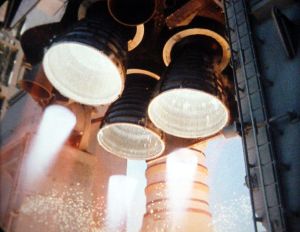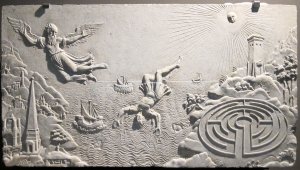Blog Archives
Star Master Weekend Recap- Dr. Richard Obousy
So, I know I’m really late on this, but I wanted to give a very warm thank you to Dr. Richard Obousy for agreeing to come down to Primland last week, and talk about his company Icarus Interstellar. Here are a few notes I took during his presentation.
Part 1- Background On Dr. Obousy, and the Icarus Project
Dr. Obousy has had a longstanding interest in space travel and physics. He holds a Ph.D in theoretical physics, and worked for the UK Defense Evaluation and Research Agency (DERA) as a radar physicist from 1999-2002. He currently works as president of Icarus Interstellar, and Founder and Manager of CitizenShipper LLC. Dr. Obousy has written for over 15 peer-reviewed publications, and appeared on such television and radio programs as the History Channel series “The Universe,”
Icarus Intersellar is nonprofit, 70 volunteer group with the goal of creating spacecraft that can fly beyond our solar system, and reach closest stars by the year 2100. The team comes from all over the world, pooling research over the internet. The group was started in 2009, as an outgrowth of Project Daedalus, a project begun in 1973 by the British Interplanetary Society.
The project is split into 20 modules designed to plan out every stage of development, propulsion, and communication within the 100 year time span. On the project’s website, readers can download a complete report on the project, and learn about updates.
What’s wrong with our current spacecraft technology?
According to Dr. Obousy, the space shuttle can go 6 km per second, which means it could reach Pluto in 23 years, but would take thousands of years to go to our nearest star, Proxima Centauri. This is simply not fast enough to get past our solar system, and begin to actually touch the cosmos. Dr. Obousy, (and the crew at Icarus Interstellar) then touched on some of the potential benefits of superior space travel, such as mining for natural resources, and finding life on Mars, or Jupiter’s moon Europa. He cited the fact that data from the Curiosity and Viking spacecraft about life on these worlds is actually inconclusive! There might actually still be life in our solar system for us to still discover.
Although SETI (the Search For Extra-terrestial Intelligence) is currently scanning the skies for ET, Dr. Obousy feels that the “fleeting epoch of radio telescopes,” is no guarantee of success. Based on the findings from the Kepler Space Telescope, there may be over 400 billion planets in Milky Way, of those there might be as many as 100 billion Earth-like worlds. Dr. Obousy asserts that just because it is very difficult to locate extra-terrestrials, does not mean that they aren’t there.
How Project Icarus is Different From Current Spaceships.
Most of Project Icarus is devoted to using fusion power, rather than chemical energy, which, (if the project can perfect the process), could yield more than 10 million times more energy than the current design.
Why Did they Choose the Name “Icarus”?
For those of you who don’t know Greek mythology, Icarus was the son of the great engineer Daedalus, who created a pair of wax wings to give himself and his son the ability to fly. Unfortunately, the boy was so excited by this new power, and flew too close to the Sun, melting his wings, and sending the boy plummeting to his death. Understandably, this tragic story might seem like an odd source for the name of a company that designs space ships, but Dr. Obousy explains that, despite the outcome, Icarus, “pushed technology to its limits to discover hidden flaws,” which is how the story becomes one of the mantras to inspire the team.
Icarus is hopeful that they may some day create new technology that would allow us to travel at light speed, by dilebrerately warping space and time to travel through space at speeds that are unimaginable right now. Dr. Obousy cited many physicists that back up the idea that space time is not limited by light speed, and that there are natural sources of power such as dark energy and solar photons, that could be harnessed to propel spacecraft, (though at present, the energy required would be considerable to say the least). In the video above, you can get a glimpse of how Dr. Obousy suggested using such phenomena as the Casimir effect, and its ability to control dark energy as a sort of warp drive, using real scientific principles.
The Icarus Program is still fraught with challenges- monetary, resources, time, and of course the seemingly impossible difficulties creating real life interstellar vehicles, but Dr. Obousey and his team from Icarus Interstellar remain hopeful that “If we throw down the gauntlet, (i.e. challenging the members of his group), we will rise to the challenge like we did in the Apollo program,” which would allow us to take another great step in the field of science, and ultimately the human race.
Once again, I have to thank Dr. Obousy for his inspiring talk, and hope that he will visit Primland again soon!
Happy Stargazing!



